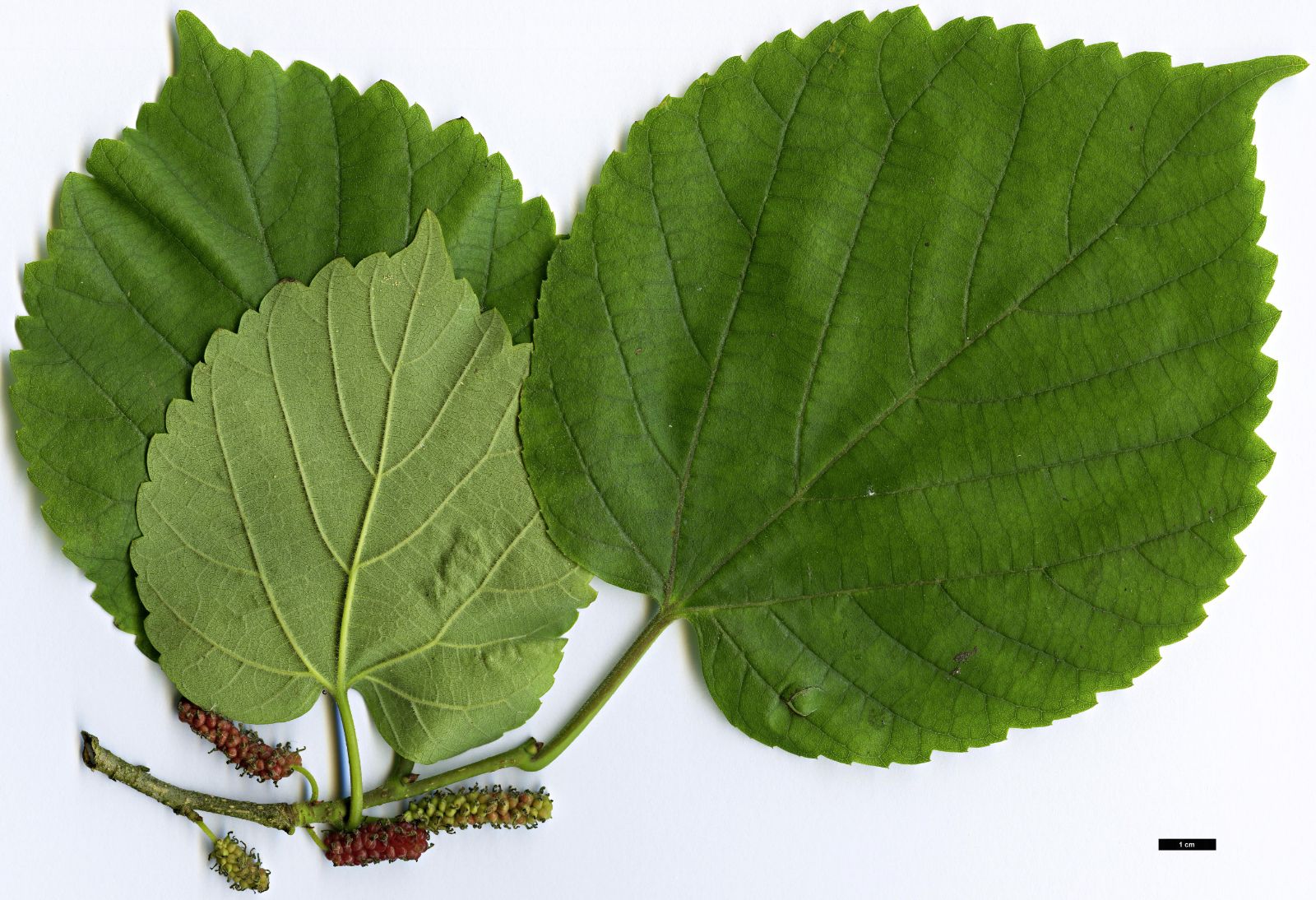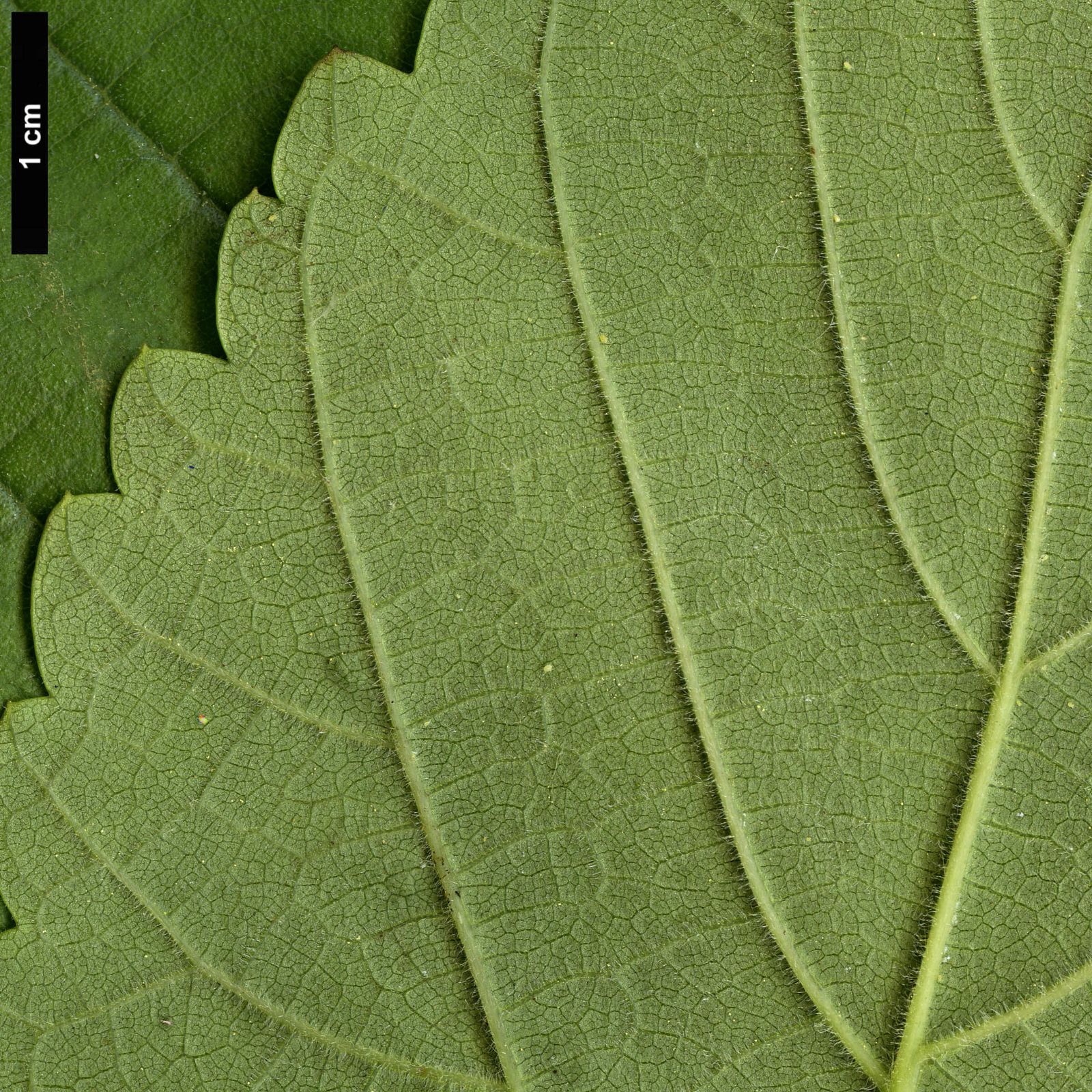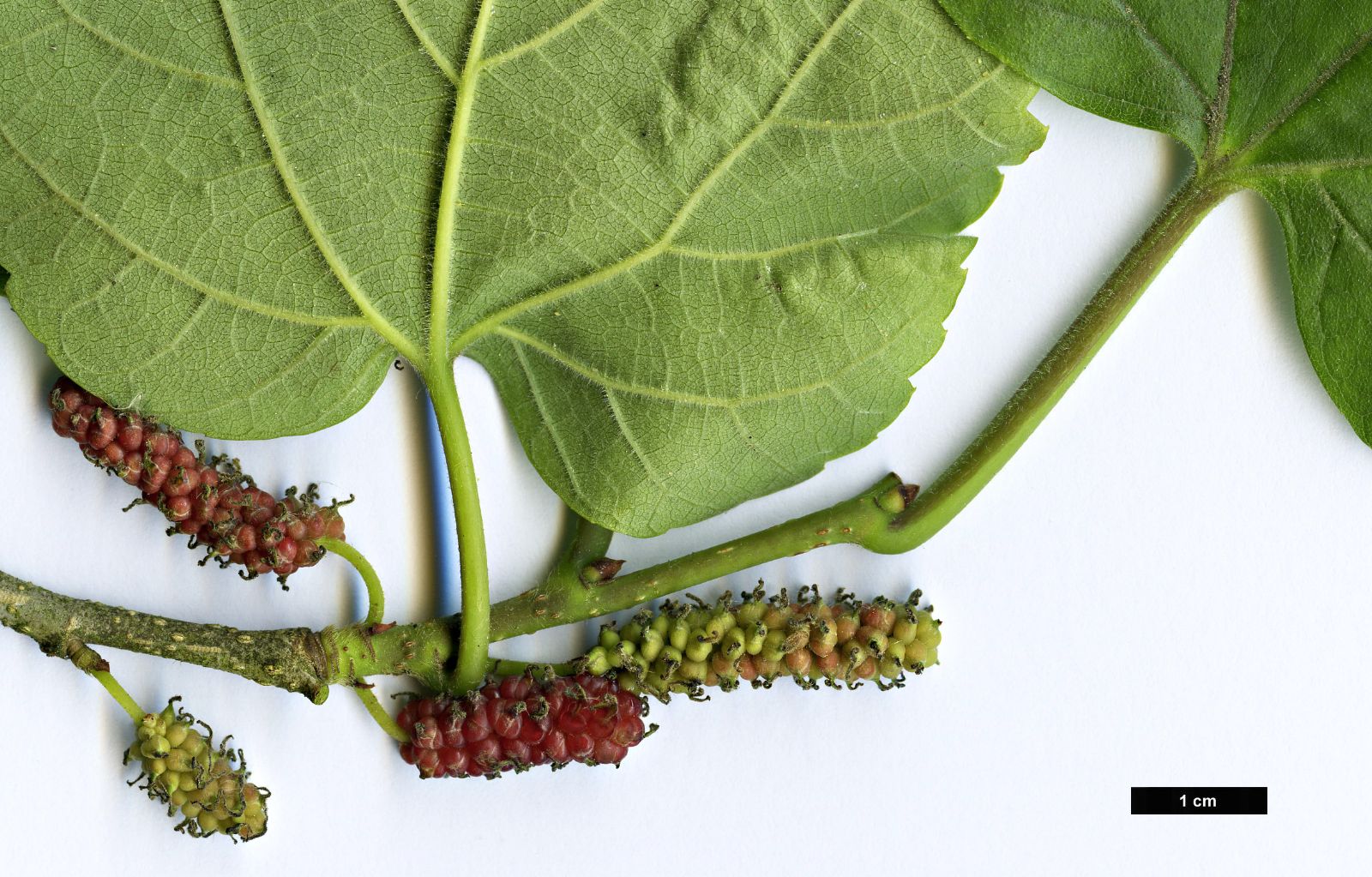Morus cathayana
Sponsor
Kindly sponsored by a member of the International Dendrology Society.
Credits
Tom Christian & Peter Coles (2022)
Recommended citation
Christian, T. & Coles, P. (2022), 'Morus cathayana' from the website Trees and Shrubs Online (treesandshrubsonline.
Genus
Common Names
- 华桑 (hua sang)
Small trees or shrubs to 7 m; dioecious or monoecious. Bark pale grey to greyish-white, or brown, smooth. Branchlets pubescent when young, ± glabrous later, with conspicuous oblong lenticels. Winter buds oblong to sub-globose, brown, each scale with a white band on the apical margin, to 4 mm. Stipules lanceolate, to 1.5 cm. Leaves broadly ovate to sub-orbicular, occasionally lobed, 8–20 × 6–15 cm, thick, papery; upper surface with a sparse covering of short hairs throughout, basally concentrated along veins; lower surface with a dense whitish pubescence or yellowish-grey (var. gongshanensis); base cordate to truncate, ± oblique; margin with shallow, coarse teeth, or entire in the lower half (var. gongshanensis); apex acute to acuminate; petiole 2–5 cm. Male inflorescences 1–2 per node, 3–6 cm, peduncle 1–1.5 cm; male flowers with narrow-ovate yellow-green calyx lobes, adaxially pubescent, stamens small, pistillode. Female inflorescences 1 per node, (1–)2–3(–5) cm, peduncle 1–1.5 cm; female flowers with obovate calyx lobes, pubescent near the tip, styles short; stigmas 2-branched, abaxially pubescent. Syncarp maturing white, red, or dark purple, cylindric, 2–3 cm. Flowering spring, fruiting spring to early summer. (Wu, Zhou & Gilbert 2003; Razdan & Dennis Thomas 2021).
Distribution China Anhui, N Fujian, N Guangdong, Hebei, Henan, Hubei, Hunan, S Jiangsu, S Shaanxi, Sichuan, NW Yunnan, Zhejiang Japan North Korea (?) South Korea
Habitat Sunny slopes or valleys, high mountains; 900–1300 m asl.
Taxonomic note A variety, var. gongshanensis (Z.Y. Cao) Z.Y. Cao differs from typical M. cathayana in its leaves with a yellowish-grey pubescence on their undersides (cf. white) and entire margins in the lower half of the blade (cf. coarsely toothed) (Wu, Zhou & Gilbert 2003); this variety is not known to be in cultivation in our area.
Native to east Asia, Morus cathayana was first discovered about 1888 in Hubei by Augustine Henry (Bean 1981). It was later introduced by Wilson, for the herbarium in 1904 but certainly as living material in 1907 (Sargent 1913). Wilson noted it was common ‘by the sides of streams, in thickets and in moist woods on the mountains of western Hupeh [Hubei] and Szech’uan [Sichuan]’; Sargent called it ‘a well-marked species with its hairy leaves, shoots and petioles and with the cylindrical white fruiting catkins’ (Sargent 1913, but note the variation in fruit colour which is now better understood).
Material descending from Wilson’s 1907 collection persists at Kew, where a tree 14.5 m × 49 cm dbh was the largest in the UK and Ireland in 2022 (Tree Register 2022). Several of the others recorded by the Tree Register bear the cautionary note ‘as label’ in reference to the validity of the identification. It might well be that the trickle of plants circulating under this name in the European nursery trade are all, ultimately, descendants of Wilson material, but most lack provenance details. Maurice Foster grows M. cathayana in his garden in Kent, UK; obtained from Arboretum Waasland in 2015, it has made a spreading tree c. 3 m tall and flowered for the first time in 2022 (M. Foster pers. comm.). The species has been sold by PanGlobal Plants and this will be the source of several young trees in UK gardens, including one, accessioned in 2018, growing in the grounds of Marlborough House, London, which was establishing well in 2021 (pers. obs.).
In a 1962 article in the British magazine Country Life, horticulturalist Miles Hadfield speculated that the genetically complex (22-ploid) Morus nigra, which is not found growing wild anywhere today, may be an ancient hybrid of M. cathayana and M. alba, which, he observed, grow together in the mountains of Central China (Hadfield 1962). While M. alba is genetically simple (diploid), M. cathayana can have five, six, or even eight duplicate sets of chromosomes. To date there has been no support for this interesting hypothesis.








